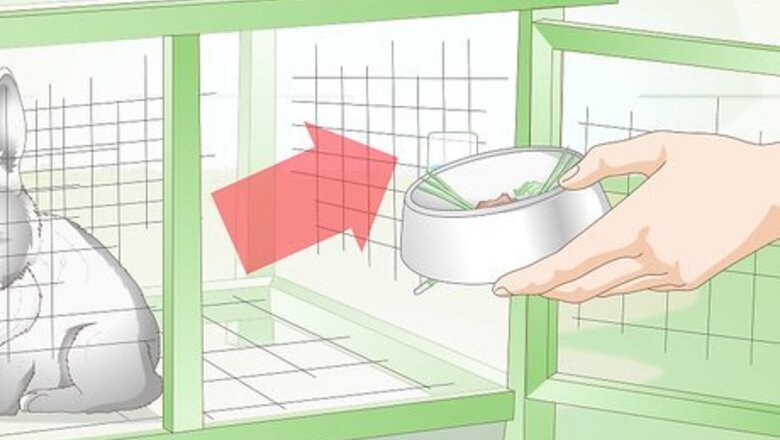
views
Maintaining the Cage Weekly
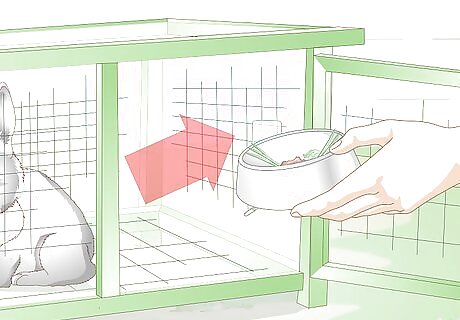
Remove leftover food. It’s important to the health of your rabbit to keep its food dish refilled and clean. Remove any old or leftover food every day to prevent bacteria growth that could harm your rabbit. At least once a week, you should wash the dish with soap and hot water. Remove stale or wilting bits of food and any other material, like fur or feces, from the dish. Wash the food dish in hot, soapy water or in your dishwasher at least once every week and more often if necessary. For example, if your rabbit urinated or defecated in the dish, it’s important to wash it. Dry the dish completely before using it again, which can prevent the growth of harmful bacteria. Refill your rabbit’s food as needed, giving it just enough food to prevent hunger.
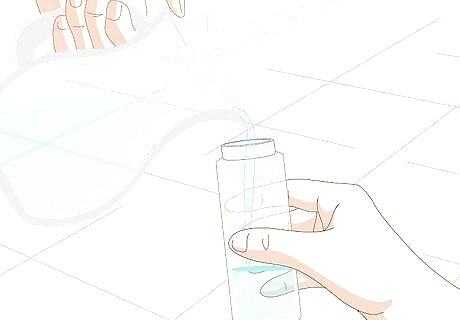
Refresh the water bottle. It’s also important to your bunny’s health to have fresh water daily. Refill the water bottle at least once daily and wash it at least weekly in hot water and soap to kill and prevent bacteria growth. Pour out water at least once a day and replace it with fresh water. Take out any material floating in the water before refilling it. If the floating matter has begun to dissolve, wash the bottle in hot, soapy water. Make sure that water is flowing once the bottle is refilled. Place your finger under the bottle and press on it to ensure proper dispensing. Put the water bottle in the dishwasher or wash the bottle in hot, soapy water once a week or more often if necessary.
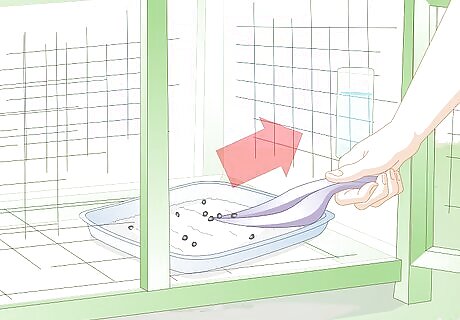
Scoop the litter area. Your rabbit will urinate and defecate usually in one corner of its habitat. In fact, your rabbit may even have a litter box. You should remove soiled litter, hay, or newspaper every day. Replace all of the litter, hay, or newspaper at least once a week or more often if necessary. Doing this prevents bad odors from circulating through your home as well as minimizing the risk of infection from bacterial buildup. Focus your daily maintenance on the litter box or corner in which your rabbit urinates or defecates. Wipe any soiled walls or floor spaces as needed. You can use a disinfectant or a vinegar and water mixture. Allow the habitat to dry thoroughly before you replace any bedding, toys, or dishes. This prevents the growth of bacteria or ammonia that can harm your rabbit. Put your rabbit in a safe space if you have to remove and replace all of the bedding. This can make the process easier on you—and your rabbit. Give it a few food pellets or a piece of lettuce to keep your rabbit occupied while you clean. Avoid using pine or cedar shavings and clay cat litter as litter for your rabbit. These can cause illness. Stick with pelleted litter, hay, or old newspaper as litter. Leave any particularly large and moist droppings behind. These are likely cecotropes, which are pellets that need to be eaten by the rabbit in order to maintain bowel health.
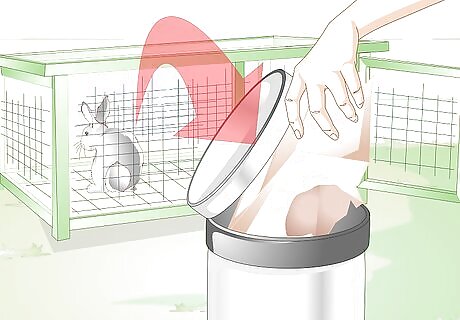
Throw away old toys. Because rabbits love to dig and chew, many people fill cardboard boxes with paper or give their rabbit old paper, such as a phonebook, with which to play. Check these toys at least once a week and replace them as needed. Check any other toys for defects or to see if they’re broken. If so, throw the toys away and replace them with new ones. Remember that moisture can be harmful to a rabbits health, so replace any paper that appears or smells moist or like mildew.
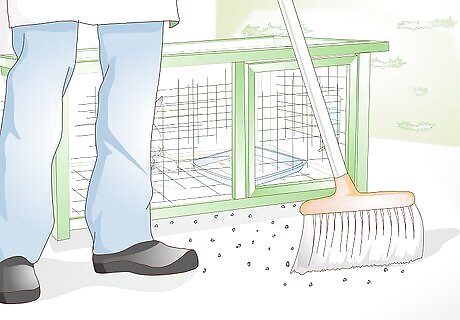
Sweep and clean the habitat area. Although rabbits love cleanliness, they can be very messy. Rabbits may kick food, bedding, or litter outside of their cage. Sweep any material from areas around the habitat at least weekly and more often if necessary. Wipe any areas of the floor or walls on which your rabbit sprayed with a disinfectant to prevent odor and hinder bacteria growth.
Deep-Cleaning the Habitat Bi-Weekly or Monthly
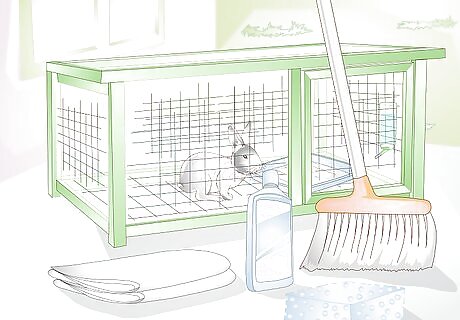
Gather cleaning supplies. Every two weeks to a month, you’ll need to deep-clean your rabbit’s cage. You’ll likely need more supplies than you used in your daily and weekly maintenance. Having the following supplies on hand can help speed up the process: Sponge Disinfectant or a mixture of four parts water to one part vinegar Paper towels Trash bag New litter and bedding New toys Broom and dustpan Vacuum.
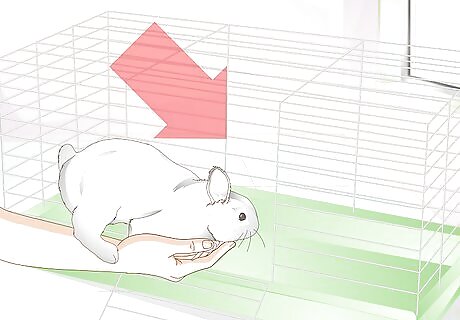
Put your rabbit in a safe place. Take your rabbit out of the cage and put it in a safe place while you clean. This can allow you to safely deep-clean the cage without traumatizing your rabbit or exposing it to harmful fumes or chemicals. Allow your rabbit to hop freely through your home if it uses the cage only as a home base. If not, make sure your rabbit is in an area that is secured from other animals or potential escape. You can also put your rabbit in a different cage or your bathtub. Just make sure the drain is covered. Avoid letting your rabbit roam outside, which can expose it to harm from other animals. Give your rabbit leafy greens or food pellets while you clean. Make sure it has a toy like an old phonebook or chew toy to satisfy natural urges to dig and chew.
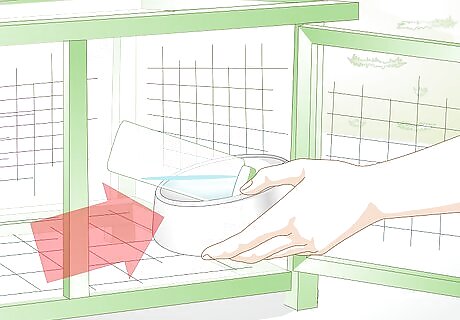
Empty the cage. It’s very important to your rabbit’s health and happiness to deep-clean your rabbit’s cage at least once a month and more often if necessary. This requires cleaning the interior and exterior of the cage, from the walls and floor to the litter pan and toys. Removing every item in the cage before you start can help you clean more effectively. Have your trash bag ready and throw away leftover food, litter, newspaper, or other bedding. Empty the water bottle into a sink. Set aside anything you are going to keep such as toys, blankets, food dishes and the litter box until you are ready to individually clean these items.

Wipe down the cage walls. A mixture of vinegar and water is the safest disinfectant for your rabbit as commercial chemicals can be toxic. Using either the vinegar mixture or another disinfectant, wipe down each of the habitat’s walls as well as the floor and ceiling until the cage is clean. Scrub any stains until they are gone. You may find that using a bit of baking soda and vinegar paste can help lift stains more easily. Make sure to wipe any areas scrubbed with the paste until there is no residue, which could harm your rabbit. Let the cage to dry thoroughly before replacing any items. This inhibits the growth of bacteria or fungus. In addition, it can protect your rabbit from the effects of moisture-related illness such as alopecia. Consider allowing the cage to dry in the sunshine, which can further inhibit bacteria growth and may speed up drying time.
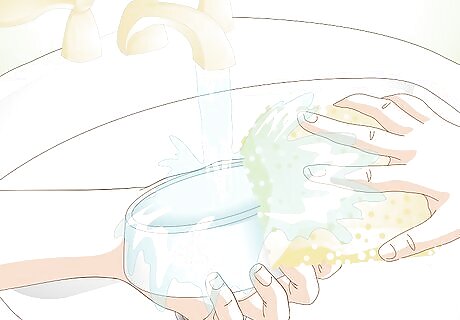
Wash the food dish. You should be washing your rabbit’s food dish at least once a week. This is important so that your rabbit won’t get sick from old food, fungus, or other bacteria that can grow in food dishes. If you do not wash the food as a part of weekly cleaning, then do it at least bi-monthly or monthly. Check the dish to make sure there are no cracks or other defects that may harm your rabbit. Wash the dish in hot, soapy water or in your dishwasher. Consider sterilizing it in boiling water to kill bacteria and mold or mildew. Let the dish dry thoroughly before refilling it to inhibit bacteria growth that can harm your rabbit.
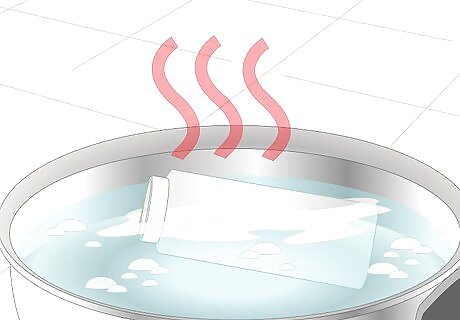
Sterilize the water bottle. As with the food dish, you should be washing the water dish or bottle at least one a week. However, if you don’t, do this during your bi-monthly or monthly cleaning session. In addition, sterilize the water bottle to kill any bacteria or other organisms. Wash the bottle in hot, soapy water or in your dishwasher. Afterwards, boil it in a separate pan. Allow the bottle to dry thoroughly after washing it to inhibit bacterial growth that can harm your rabbit’s health. Refill the dish or bottle and check to make sure the water flowing properly.
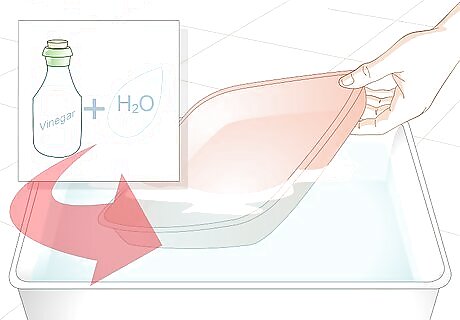
Soak the litter pan. A litter box or pan can be the site of heavy odors and bacterial growth in the cage. Soaking the litter box in a mixture of vinegar and water can clean and disinfect it as well as get rid of any stains. In turn, this promotes your rabbit’s health and happiness. Wipe out the litter pan with a sponge, old rag, or a paper towel before soaking it. Mix 4 parts water to one part vinegar and let the litter pan soak while you are cleaning the rest of the cage. Make sure to let allow the litter box to dry thoroughly to prevent bacterial growth. Refill the litter pan with fresh litter, hay, or newspaper.

Wash bedding. If your rabbit has blankets, sheets, or other fabric as bedding in its cage, wash it in your washer. Use hot water and an unscented detergent for sensitive skin. This can ensure that your rabbit’s delicate skin isn’t exposed to harsh chemicals or scents. Make sure to wash and thoroughly dry all of the bedding at the highest temperatures possible. This can kill bacteria, remove stains, and prevent illness because of lingering moisture.
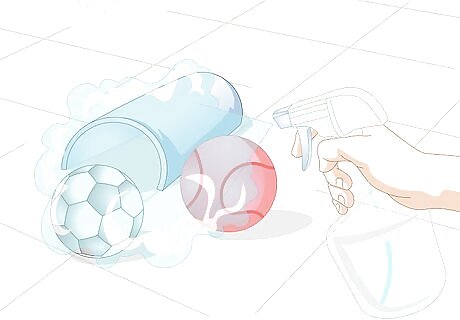
Disinfect and replace toys. Just as other areas of your rabbit’s cage can get soiled, so can its toys. Inspect all of your rabbit’s toys and throw away any defective items that may harm your rabbit. Wash all of your rabbit’s plastic toys and replace any paper toys such as telephone books or paper boxes. Use the same mixture of vinegar and water to clean your rabbit’s toys. Wipe off each toy with the mixture, re-inspecting each toy as your wash it. Allow the toys to dry thoroughly before putting them back in your rabbit’s cage. Throw away all of the paper toys and replace them to prevent bacteria growth that can harm your rabbit.
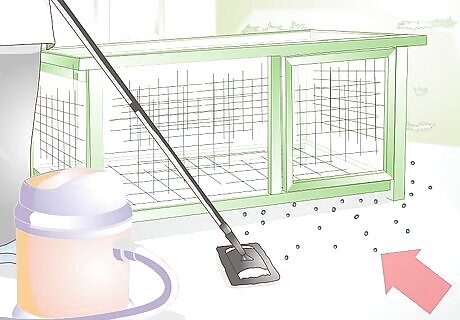
Clean around the cage. Remember that bunnies can be messy, even in areas outside of their cages. Wiping down any soiled spots on walls and floors and vacuuming the general habitat vicinity promotes cleanliness and can remove lingering bacteria.
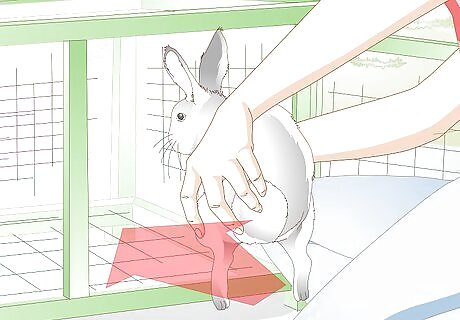
Return your rabbit to its cage. Once you’ve cleaned and dried your rabbit’s habitat, reintroduce your pet to its home. Give your bunny a treat for behaving while you cleaned.















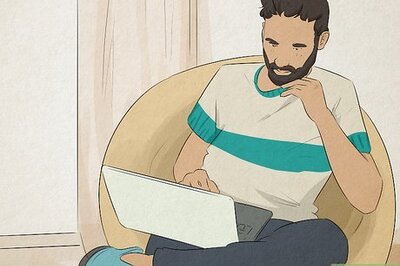


Comments
0 comment